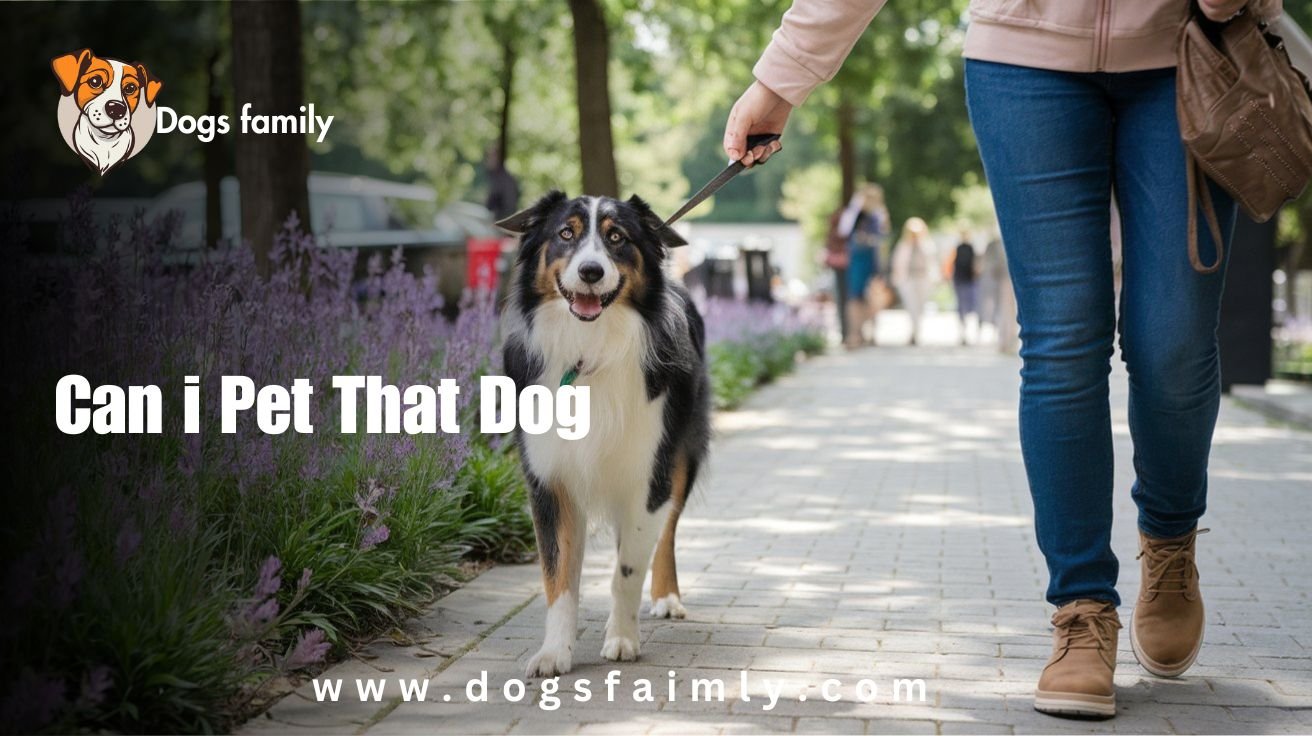Dogs are some of the most beloved companions on the planet. Their friendly faces, wagging tails, and warm personalities make them the ideal pets for many people. However, as much as we adore dogs, one common question often arises when we encounter a dog out and about: ‘Can I pet that dog?‘ While the answer might seem straightforward, ‘Can I pet that dog?‘ is not always as simple as it sounds. There’s more to this question than meets the eye.
Understanding the Basics: Should You Pet That Dog?
Before rushing in to pet a dog, it’s essential to pause and think: Can I pet that dog? Sometimes, dogs may not be in the mood for strangers, much like in a game of Dogs Playing Cards—you need to read their body language carefully. Just as you’d observe the players in a card game to understand their next move, respecting a dog’s personal space is crucial. Not all dogs enjoy being petted by strangers, and some may even feel threatened. So, how do you know if it’s okay to pet a dog? Here’s what you should consider:
1. Observe the Dog’s Behavior
The first step is to observe the dog’s behavior from a distance. Is the dog wagging its tail or does it seem tense? A wagging tail doesn’t always mean friendliness. A stiff, high-tail wag can indicate that a dog is on alert. On the other hand, a loose, low wag might be a sign of a happy and approachable dog. Understanding these subtle signals can be enhanced through dog training games, which help you teach your dog appropriate reactions and improve their social behavior.
2. Look for Body Language Cues
It’s important to clarify that dogs, like all animals, communicate through body language rather than concepts like human biases. In the case of “homophobic dog” behavior, what you’re likely observing is a dog’s response to unfamiliar situations, people, or other dogs, rather than a human-like judgment or attitude.
3. Pay Attention to the Owner’s Cues
It’s always a good idea to ask the dog’s owner, “Can I pet that dog?” They know their dog better than anyone else and can tell you if it’s safe, especially when dealing with scary dogs. Some dogs are very friendly, while others might be shy, nervous, or protective. The owner can give you guidance and often will appreciate that you asked before petting, especially if the dog has aggressive tendencies or is easily frightened.
When It’s Okay to Pet a Dog
Once you’ve assessed the dog’s body language and checked in with the owner, you might be in the clear to pet the dog. So, Here’s a step-by-step guide on how to approach a dog safely, ensuring that you respect their boundaries and comfort:
1. Approach Slowly
Can I pet that dog? Move slowly toward the dog, as fast movements can startle them, especially if they don’t know you. If the dog is calm, you can move a little closer. But always keep an eye on the dog’s body language to make sure it stays relaxed—remember, “Can I pet that dog” depends on their comfort.
2. Let the Dog Come to You
Rather than reaching out to the dog immediately, let the dog come to you. Many dogs will sniff you and get to know you on their own terms. This way, you’re not invading their personal space.
3. Use a Calm and Friendly Voice
As you approach, speak softly and calmly to the dog. This will help them feel more comfortable and understand that you’re not a threat.
4. Pet Gently and Avoid Sensitive Areas
When you do pet the dog, keep your touch gentle and avoid sensitive areas such as the face, ears, and tail. Always ask, “Can I pet that dog?” before approaching, and start by petting the dog on its back or sides, where it’s likely to be more comfortable. Remember, dogs have different preferences—some may love a gentle scratch, while others might prefer a soft pat. So, next time you think, “Can I pet that dog?” make sure to approach with care and respect for the dog’s boundaries.
The Importance of Reading Dog’s Signals
Dogs have various ways of signaling how they feel. If you’re asking yourself, ‘Can I pet that dog?‘ and the dog seems hesitant, take it as a sign that the dog might not be ready for a petting session. Always consider the dog’s behavior carefully. If you’re unsure, it’s okay to pause and reassess—ask again, ‘Can I pet that dog?‘ to ensure both you and the dog are comfortable with the interaction. Here’s what to look for:
1. Signs of Aggression or Fear
If a dog is showing its teeth, growling, or seems tense and rigid, it’s not the time to pet. A dog that feels threatened will often resort to aggressive behavior to protect itself or its territory. In such cases, you should avoid approaching the dog.
2. Playful Behavior
Dogs that are feeling playful will often wag their tails, bounce around, and exhibit other signs of excitement. A dog that wants to play will show you by jumping or bouncing near you. If the dog is displaying these signs, it’s usually safe to pet them.
3. Signs of Shyness or Anxiety
If a dog is cowering, hiding behind its owner, or looking away from you, these are signs that the dog might not be comfortable with your approach. Respect the dog’s space and avoid forcing an interaction.
Anecdote: A Lesson in Dog Etiquette
A few years ago, I was walking through the park when I noticed a small, fluffy dog with its owner. The dog was adorable, with a curly coat and big, expressive eyes. As I approached, I had the overwhelming urge to bend down and pet it. However, I remembered the importance of asking first. I politely asked the owner, “Can I pet that dog?” to which the owner smiled and said, “Sure, but let her come to you first.” I followed the advice, and after a few seconds, the dog cautiously approached me, sniffed my hand, and let me give her a gentle pat. It was a great experience, and I learned the value of patience and respecting the dog’s space.
What to Do if the Dog Doesn’t Want to Be Petted
Not all dogs are in the mood to be pet, and that’s okay. If you ask “Can I pet that dog?” and the owner says no, or the dog shows signs of anxiety or disinterest, it’s important to respect that. Sometimes dogs may be nervous due to their environment, health, or past experiences.
1. Respect the Dog’s Space
If the dog moves away from you or seems uninterested, do not chase after it. Let the dog go at its own pace and enjoy its walk or rest. Remember that the dog has the right to enjoy its space just like you do.
2. Don’t Take It Personally
If a dog doesn’t want to be petted, it doesn’t mean that it doesn’t like you. It’s just that the dog might be having a bad day or feeling anxious. Dogs, like humans, have different moods and preferences.
Conclusion
In conclusion, the question “Can I pet that dog?” is one that every dog lover should ask, but it’s important to remember that not all dogs are the same. Every dog has its own personality, and reading their body language is key to knowing when it’s okay to pet them. Whether you’re interacting with a playful pup or a shy dog, always approach with care, patience, and respect for the dog’s boundaries.
By understanding the signs and following a few simple steps, you can have a positive experience when meeting new dogs. So, next time you encounter a furry friend, make sure to ask, “Can I pet that dog?” and follow the steps for a safe, enjoyable interaction.
In this guide, we will explore how to approach this situation with the care and respect that dogs deserve. This comprehensive article will take you through the steps of safely interacting with dogs, understanding their body language, and ensuring both you and the dog are comfortable
FAQs
What should I do if the dog doesn’t want to be petted?
Respect the dog’s space and avoid forcing interaction. If the dog moves away or seems uninterested, allow it to enjoy its space without pursuing it.
Why is it important to ask the owner before petting a dog?
The owner knows their dog best and can assess whether it's safe to pet. They can help you avoid startling or upsetting the dog, especially if it's shy or protective.
How should I approach a dog if I want to pet it?
Approach the dog slowly, let it come to you, and speak softly. Pet gently, avoiding sensitive areas like the face and tail to ensure the dog feels comfortable.
What signs indicate a dog may be scared or aggressive?
Signs of fear or aggression include growling, baring teeth, a stiff posture, or backing away. If you notice these behaviors, it’s best not to pet the dog.
Final Words
To wrap up, petting a dog can be a delightful experience, but only when it’s done with the dog’s comfort in mind. Always pay attention to the dog’s body language, ask the owner for permission, and be respectful of their space. Remember, a well-considered approach will not only keep you safe but also ensure that the dog feels comfortable and loved. Happy petting!

